Sarah Sundin's Blog, page 60
March 22, 2024
Today in World War II History—March 22, 1944

Poster explaining US gasoline rationing cards in WWII
80 Years Ago—Mar. 22, 1944: New Zealanders make final assault on Monte Cassino, Italy, which fails.
RAF bombing raid to Frankfurt destroys the Altstadt (old town), and the house of Goethe’s birth is destroyed on the anniversary of his birth.
In US, “A” gas rationing cards (basic passenger car ration) are cut from three gallons per week to two gallons. Read more: “Make It Do—Gasoline Rationing in World War II”
The post Today in World War II History—March 22, 1944 first appeared on Sarah Sundin.March 21, 2024
Today in World War II History—March 21, 1944

B-25 Mitchells of the US 321st Bomb Group flying past Mount Vesuvius, Italy during its eruption of 18-23 Mar 1944 (US National Archives 50460 AC)
80 Years Ago—Mar. 21, 1944: In Italy, the eruption of Mount Vesuvius buries villages of San Sebastiano and Massa; 6-km-high lava fountains are seen. See more pictures on the blog of the National World War II Museum. Also see a newsreel video of explosion.
The post Today in World War II History—March 21, 1944 first appeared on Sarah Sundin.March 20, 2024
Today in World War II History—March 20, 1944
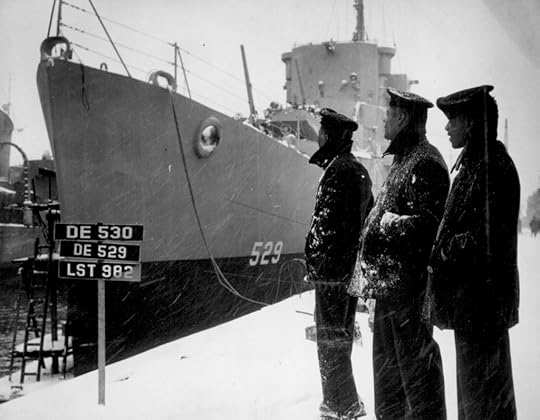
African-American crewmen of the destroyer escort USS Mason, Boston Navy Yard, MA, 20 March 1944 (US National Archives: 80-G-218861)
80 Years Ago—Mar. 20, 1944: Countdown to D-day: Gen. Harry Crerar replaces Gen. Kenneth Stuart over First Canadian Army, which will land at Juno Beach on D-day.
Destroyer escort USS Mason is commissioned at the Boston Navy Yard, the first US Navy ship with a predominately African-American enlisted crew.
US Office of Price Administration announces continuation of shoe rationing, allowing for purchase of two leather pairs per year (Read more: “Make It Do—Shoe Rationing in World War II”).
The novel Strange Fruit is banned in Boston and Detroit for “lewdness”; namely, an interracial romance.
The post Today in World War II History—March 20, 1944 first appeared on Sarah Sundin.March 19, 2024
Today in World War II History—March 19, 1944

Damage to Ponte di Piave bridge in Italy after Mediterranean Allied Air Force raid, WWII (USAF photo)
80 Years Ago—Mar. 19, 1944: Mediterranean Allied Air Force issues directive for Operation Strangle, air raids on railroads north of Rome to hinder German supply and reinforcement.
German troops occupy Hungary to prevent the nation’s withdrawal from the war.
The post Today in World War II History—March 19, 1944 first appeared on Sarah Sundin.March 18, 2024
Today in World War II History—March 18, 1944

Adm. Miklós Horthy, Regent of Hungary in WWII (public domain via Wikipedia)
80 Years Ago—Mar. 18, 1944: Hungary’s regent, Adm. Miklós Horthy, agrees to new terms of alliance with Nazi Germany, including occupation by German troops and deportation of Hungary’s 750,000 Jews.
Movie premiere of comedy See Here, Private Hargrove, starring Robert Walker & Donna Reed.
The post Today in World War II History—March 18, 1944 first appeared on Sarah Sundin.March 17, 2024
Today in World War II History—March 17, 1944

“Félix Éboué—Governor-General Fighting French Africa—Scholar, Statesman, Soldier” by Charles Alston for US Office of War Information, 1943 (US National Archives: 535672)
80 Years Ago—Mar. 17, 1944: In Cassino, Italy, New Zealanders take western part of town and the train station, and assault German strongholds in hotels.
Félix Éboué, Governor-General of French Equatorial Africa, dies of a heart attack in Cairo, age 60; he was the first person of Black African descent to be appointed to a high office in the French colonies.

Ruins of Continental Hotel in Cassino, Italy, 1944 (US Army Center of Military History)
The post Today in World War II History—March 17, 1944 first appeared on Sarah Sundin.March 16, 2024
Today in World War II History—March 16, 1944

Troops of 5th Indian Division loading a jeep into a Douglas Dakota of No.194 Squadron RAF during the reinforcement of the Imphal Garrison in India, March 1944 (Imperial War Museum: CF 145)
80 Years Ago—Mar. 16, 1944: US Air Transport Command begins airlift of 5th Indian Division from Arakan in southern Burma to reinforce besieged Imphal and Kohima in India.
The post Today in World War II History—March 16, 1944 first appeared on Sarah Sundin.March 15, 2024
Today in World War II History—March 15, 1944

Pre-invasion Bombing of Pointe du Hoc by US Ninth Air Force A-20 light bombers, spring 1944. (US Army Center for Military History)
80 Years Ago—Mar. 15, 1944: Countdown to D-day: US Ninth Air Force in England begins pre-invasion tactical missions for Operation Overlord (D-day).
Second Allied aerial attack destroys town of Cassino, Italy, in largest massed tactical air raid yet: 1,200 tons of bombs plus 200,000 rounds of artillery.
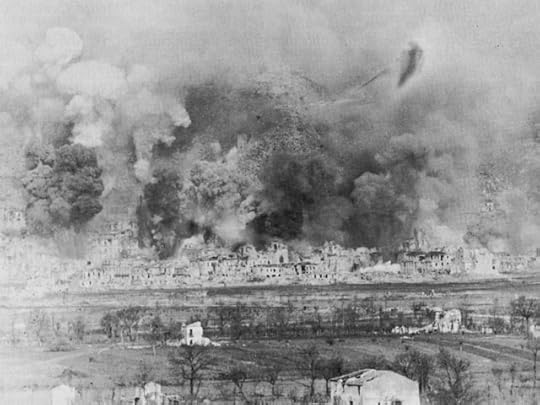
Town of Cassino during Allied bombing, 1944 (US Army Center of Military History)
The post Today in World War II History—March 15, 1944 first appeared on Sarah Sundin.March 14, 2024
Today in World War II History—March 14, 1944
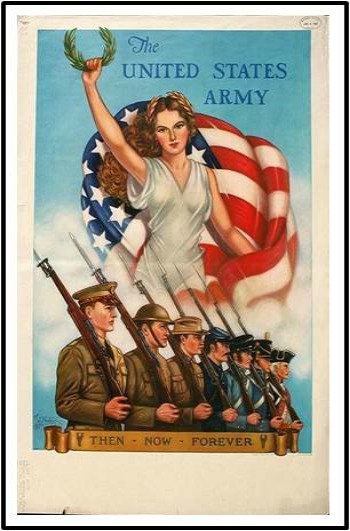
US Army recruiting poster, WWII
80 Years Ago—Mar. 14, 1944: Countdown to D-day: Commodore Cyril Douglas-Pennant takes command of Royal Navy’s Force G, which will conduct landings and provide support at Gold Beach.
In Burma, Japanese cut road from Tiddim north to Imphal, India; Indian troops are unable to retreat.
US Selective Service cancels all draft deferments for men ages 18-26 except for certified “key men” in essential occupations.
The post Today in World War II History—March 14, 1944 first appeared on Sarah Sundin.March 13, 2024
Christian Fiction Scavenger Hunt Stop #10

Welcome to the Christian Fiction Scavenger Hunt! If you’ve just discovered the hunt, be sure to start at Stop #1, and collect the clues through all the stops, in order, so you can enter to win one of our top 5 grand prizes!
The hunt BEGINS on 3/14/24 at noon MST with Stop #1 at LisaTawnBergren.com.Hunt through our loop using Chrome or Firefox as your browser (not Explorer).There is NO RUSH to complete the hunt—you have all weekend (until Sunday, 3/17/24 at midnight MST)! So take your time, reading the unique posts along the way; our hope is that you discover new authors/new books and learn new things about them.Submit your entry for the grand prizes by collecting the CLUE on each author’s scavenger hunt post and submitting your answer in the Rafflecopter form at the final stop, back on Lisa’s site. Many authors are offering additional prizes along the way (like me)! Welcome! My name is Sarah Sundin, and I write historical fiction set during World War II. My novels have won the Christy Award and the Carol Award. I live in Southern California, and my husband and I have three grown children and one darling little grandson, and we love taking our two rescue dogs on long walks. My latest novel is Embers in the London Sky. You can learn more about me and my books here on my site and on Facebook, Twitter/X, and Instagram.
Welcome! My name is Sarah Sundin, and I write historical fiction set during World War II. My novels have won the Christy Award and the Carol Award. I live in Southern California, and my husband and I have three grown children and one darling little grandson, and we love taking our two rescue dogs on long walks. My latest novel is Embers in the London Sky. You can learn more about me and my books here on my site and on Facebook, Twitter/X, and Instagram.
 After fleeing the German invasion of the Netherlands, Aleida Martens searches for her missing child in London, where she meets BBC radio correspondent Hugh Collingwood. During the London Blitz, they risk their lives to discover the truth about murders flaming in the ashes of the city—and find a connection closer than they imagined.
After fleeing the German invasion of the Netherlands, Aleida Martens searches for her missing child in London, where she meets BBC radio correspondent Hugh Collingwood. During the London Blitz, they risk their lives to discover the truth about murders flaming in the ashes of the city—and find a connection closer than they imagined.
Life in London was anything but easy during the Blitz! One thing that made life challenging was rationing.
Rationing in Britain in World War II
Great Britain, as an island nation with a large population, has always relied on imports for food and other supplies. Those imports were threatened when Germany conquered western Europe in mid-1940, removing major trade partners—and as German U-boats and surface vessels sank cargo vessels bound for England from the rest of the world.
The first thing rationed in Britain was petrol (gasoline), as of September 22, 1939. Later, paper, clothes, shoes, linens, and even soap were rationed.
Food Rationing in Britain
British ration book for a child, WWII (National Archives UK)
Food rationing started in Britain on January 8, 1940. Each person received a ration book with coupons to be torn out by the grocer. The allowed amounts of all the foods mentioned below fluctuated during the war based on supply.
The first foods rationed in January 1940 were bacon and ham (4 oz per week), butter (4 oz per week), and sugar (12 oz per week). On March 11, 1940, meat was added, with each person over the age of six allotted 1 shilling/10 pence worth per week (about 1 pound), with 11 pence worth for children under six. Chicken, game, fish, sausage, and offal were not rationed.
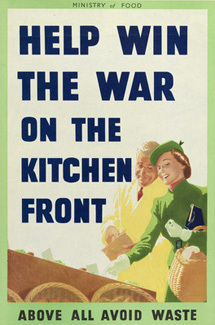
British poster, 1940 (Imperial War Museum)
Tea—that most British of staples—was added to the list on July 8, 1940 (2 oz per week)—as well as margarine (6 oz per week) and fats (2 oz per week).
To deal with continuing sugar shortages, cakes were not allowed to be iced (frosted) as of August 5, 1940, jam, marmalade, syrup, and treacle (molasses) were rationed as of March 17, 1941 (8 oz per month), and sweets and chocolates on July 26, 1942 (8 oz per 4 weeks).
Cheese was added to rationing on May 5, 1941 (1 oz per week), and milk and eggs were allocated starting May 28, 1941. Since eggs were so scarce, most people didn’t receive their allocated one egg per week. When US Lend-Lease supplies began arriving in Britain, people began receiving a tin of skim milk powder each month (December 1941) and a tin of dried eggs every two months (June 1942).
The Ministry of Food introduced a point system on December 1, 1941. At first this applied to canned meat, fish, and beans, but later included rice, canned fruit, cereals, and biscuits (cookies).
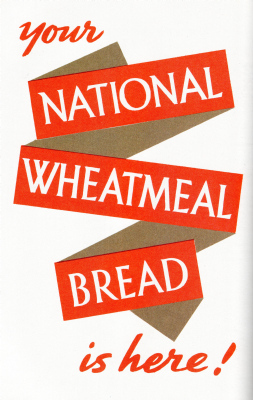
British ad for National Wheatmeal Loaf, WWII
Bread was never rationed during the war, but the sale of white bread was banned and an unpopular National Wheatmeal Loaf of wheat and potato flour was sold instead.

British Dig for Victory poster, promoting home gardening, WWII
Fruits and vegetables were never rationed, but most were scarce, including onions, tomatoes, and oranges—onions were even used as raffle prizes! Lemons and bananas were completely unavailable. To supplement their rations, people were encouraged to plant “Dig for Victory” gardens and to raise chickens and pigs.

British poster, WWII
Overall, the rationing system in Britain provided a bland and meager diet, but it ensured that everyone had enough to eat and promoted a “we’re all in this together” mentality.
Which part of food rationing would have been most difficult for you?
Here are the Stop #10 Basics:If you’re interested, you can order Embers in the London Sky on Amazon, Barnes & Noble, ChristianBook.com, Baker Book House, or at your local bookstore!
Clue to Write Down: While
Link to Stop #11, the Next Stop on the Loop: Ann Gabhart’s site!
Extra Book Giveaway!But wait! I’m offering three additional paperback copies of Embers in the London Sky! All you have to do is subscribe to my email newsletter (sign up right here!) – or be a current subscriber. Then enter the Rafflecopter below. Giveaway ends March 17, 2024 at 11 pm PST. US mailing addresses only, please.
The post Christian Fiction Scavenger Hunt Stop #10 first appeared on Sarah Sundin.


